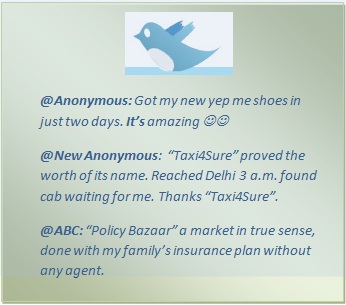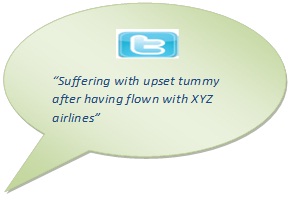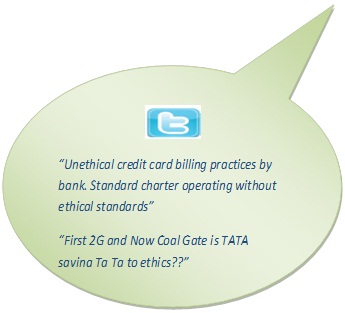- Articles ›
- Marketing and Strategy ›
- Social Media Marketing - A Double Edge Sword Articles
Social Media Marketing - A Double Edge Sword
Story of the novel “Lords of the Rings” by “John Ronald Reuel Tolkien” revolves around a powerful ring. The ring creates two personalities inside its bearer. One personality insists on destroying the ring and second insists on becoming the master of the world by owning it. Throughout the story the ring puts different characters in Catch-22 situation. At the end, the lead character -Fordo Baggins- overcomes the Catch-22 situation. He destroys the ring and becomes the savior of the world.

Image Courtesy: nikorn, freedigitalphotos.net
Today in 21st century, the social media platforms are acting as powerful ring mentioned above. Platforms like Facbook, Twitter and Orkut have succeeded in creating a Catch-22 situation in front of companies and traditional marketing gurus. Today the main topics of discussions at different marketing forums are: whether a company should go ahead with traditional marketing strategy or should it go for new online marketing platforms? Will the investment in information technology generate fruits or will it turn out to be a junk investment? Whether the 4P’s (Product, Price, Place and Promotion) of Product marketing and 7P’s (Product, Price, Place, Promotion, People, Process and Physical) of service marketing will hold the ground in new age marketing or not? What should be the focus of marketing activities customer acquisition or deal acquisition? Companies which will successfully deal with these situations will emerge as the “Lords of the Social Media Marketing”. Rapid technological changes in last two decades have changed marketing and advertisement from a creative exercise to the game of strategies. Let us look at how the changes in past decades have impacted conventional marketing.
“Social media is new decision making and brand building tool for marketers. Number of followers of Movie stars and sport personalities plays a vital role in deciding their brand value. Number of likes on Facebook page of big FMCG companies indicates their brand penetration. Political parties are also reaching common people through these platforms. All most all the leading parties and politicians across the globe have their social media account with dedicated team to monitor the fans and their reactions thus directly sensing the mood of the voters”
In last two decades two concept namely organized retail sector and eRetail emerged together. At the same time American corporate and entrepreneurs focused on “how to change the world by technological innovations”. Companies like Apple, Facebook and Twitter have changed the way we communicate. According to Comscore data approximately 1.3 billion internet user visit social networking sites, it is about 85% of total internet users (known as netizens). In India the percentage is even higher around 95% users visit social networking sites. Statcounter –web based analytical company-says India approximately has 250 million mobile handsets which are internet enabled and around 50% of these handset users access internet from their mobile phones. These numbers have left no other options for the companies, but to be present there where the users are “The Social Media”.
In traditional marketing companies spend Billions of dollars in Promotions and Brand building activities. On social media Promotions and Brand building can be done absolutely free of cost. Large user base on social media makes any idea go viral in seconds. Two recent example of online brand building are: south Indian song “Kolavari D” and South Korean pop Singer Psy for his “Gangnam Style”.

While first song was replicated across various industries in different languages, second created the history by receiving applauds from United Nations president Ban Ki Moon and featuring itself as word of the year in Collins dictionary. These two brands are classic example of brand building using social media. Now new generation entrepreneurs are also realizing this potential and moving away from conventional marketing strategies and opting new age social media marketing. Shoes and apparels brands “Yepme “, travel service provider brands like “Taxi4Sure and Redbus” Insurance service brand like “PolicyBazar” have successfully positioned their brand using social media .
Branding of products and services on social medial follows basic principle of branding explained by Al Ries and Laura Ries in their book “22 Immutable Laws of Branding” that is “Law of Publicity”. However the social media portals -by its very nature- are unregulated. This gives equal opportunities to unsatisfied customers to express their bad experience with products or services. Many companies have felt the brunt of unsatisfied customers. Mouthshut, Glassdoor and TripAdvisor are few heavy traffic sites where consumers (without hesitations) post their experience (true or false) making brand management a challenging job for companies. Bollywood actress Priyanka Chpora’s twit “Suffering from Upset tummy after having flown in airlines” created havoc for Jet Airways.

Jet officials quickly got in touch with her and ensured quality of food supplied in airlines. She twitted back about the airlines concern; thus jet avoided an almost certain crashing of its brand. Big Brother of marketing strategies Coca-Cola has also failed miserably in social media marketing. Once Coca-cola started a game on its official Facebook page and asked its consumers to create stories with “Happiness” proposition. Entire marketing exercise backfired when user started sharing humorous stories based out of their toilet.

Financial power house standard charter also faced anger of customers on its Facebook page this year. Bank started sending credit card fee SMS to all its old customers who already had destroyed bank’s credit card.
However some big brands have immensely benefited from their social media presence. Brands like Maruti Suzuki, ITC, Café Coffee Day, P&G, Hindustan Unilever, Emami, Nokia and Samsung Mobile have used social media with a pinch of salt and successfully created brand equity. During the worker unrest at its Manesar Plant last year Maruti receive good support on different blogging and social media sites. ITC, Emami and P&G have succeeded in attracting talented pool on their official page by posting real time case studies and marketing challenges. Thus Social media marketing has the potential to make the game or take the game away from the companies. It is a double edge sword which needs careful handling.
Social media marketing dos and don’ts:
Dos
• Companies should have good Customer Relation Management (CRM) tools. These tools will help marketers in indentifying the targeted audience group.
• Companies should have dedicated teams to listen brand talk on internet.
• Social media advertisement should not be imposed upon the users and user should always have the flexibility to escape the advertisements.
• Companies should learn to admit the mistakes gracefully and should engage actively with the users on social media platform to resolve the issues quickly.
Don’ts
• Don't leave your brand open for attack on social media. Last year Macdonald’s share your MacD stories marketing campaign on twitter backfired. Currently ITC is doing a smart marketing campaign for Bingo Tangles (“Best enjoyed when shared”) by creating a Facebook application. You can share your recorded massage with selected friends. This makes brand ITC tenable from attacks.
• Companies should optimize the search results. Negative stories about the brand should not come at the top of the search results.
• Companies should refrain from buying positive feedbacks and should not hire media agents to post positive feedback about their product. When the truth will come out the backlash will be very sever.
• Customer loyalty is true for both conventional and online marketing. There for the focus of online marketing should be customer acquisition not transaction acquisition.
This article has been authored by Roshan Khatri from IIFT
References:
http://en.wikipedia.org/wiki/Social_media_marketing
http://gs.statcounter.com/?PHPSESSID=j2juf5bil673j4vrso39eijui6#browser-IN-monthly-201205-201305
http://vimeo.com/58027229
http://www.b2bbusinesscoach.com/blog/why-online-marketing-is-so-important-in-todays-b2bbusiness-world
https://en.wikipedia.org/wiki/Online_advertising
http://www.comscore.com/Insights/Presentations_and_Whitepapers/2011/State_of_the_Internet_in_India
Views expressed in the article are personal. The articles are for educational & academic purpose only, and have been uploaded by the MBA Skool Team.
If you are interested in writing articles for us, Submit Here
Share this Page on:
What is MBA Skool?About Us
MBA Skool is a Knowledge Resource for Management Students, Aspirants & Professionals.
Business Courses
Quizzes & Skills
Quizzes test your expertise in business and Skill tests evaluate your management traits
All Business Sections
Write for Us